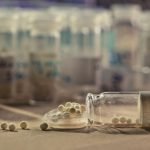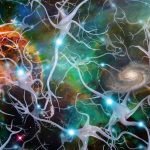Getting Better Sleep Could HELP Reverse Alzheimer’s (in mice)
Edited By NODE SMITH, ND
From Baylor College of Medicine- Multiple studies in humans and mouse models indicate that sleep disruptions raise the risk of Alzheimer’s disease (AD) by increasing the accumulation of disease-relevant proteins such as amyloid-beta (A-beta) in the brain. In the current study, a team led by researchers at Baylor College of Medicine discovered that, in an animal model of Alzheimer’s disease, restoring normal sleep by returning to normal the activity of the thalamic reticular nucleus (TRN), a brain region involved in maintaining stable sleep, reduced the accumulation of A-beta plaques in the brain.
Published in the journal Science Translational Medicine, the study suggests that TRN not only may play a previously unsuspected driving role in symptoms associated with Alzheimer’s, but also that restoring its normal activity could be a potential therapeutic approach for this severe condition.
The TRN is quiet in AD
“Our interest in studying the TRN in the context of Alzheimer’s disease began when we observed in an animal model that TRN activity was generally reduced when compared to the TRN activity of animals without the condition,” said corresponding author Dr. Jeannie Chin, associate professor of neuroscience at Baylor.
When we sleep, the TRN is in general more active than when we are awake, Chin explained. This increased TRN activity reduces the perception of peripheral sensory information. Consequently, when we sleep, we typically are not aware of sounds, lights and other sensations, which helps us get a good night sleep.
“Observing that the TRN in our animal model was less active than in animals without the condition, we investigated the possibility that a quiet TRN could be a reason for the sleep interruptions that are common in people with Alzheimer’s disease,” said first author Dr. Rohan Jagirdar, an instructor in the Chin lab.
The researchers began by determining whether their Alzheimer’s disease mice would wake up more often than mice without the disease during normal sleeping hours. Using a wireless system to record the animals’ brain activity, the researchers discovered that, indeed, the Alzheimer’s mice woke up 50% more times than non-Alzheimer’s mice. Moreover, the Alzheimer’s mice got less than the normal amount of slow wave sleep, the deep restorative sleep during which waste products and metabolites are cleared from the brain. This was observed in the early stages of disease progression, before the animals developed memory deficits.
“This finding is relevant to the human condition, as research has shown that sleep fragmentation and other sleep disturbances in cognitively normal people are associated with increased Alzheimer’s disease risk,” Chin said. “When AD mice got older, reaching about three to five months, their sleep continued to be disrupted and they also presented with memory deficits.”
Quiet TRN linked to A-beta plaque load
In the AD animal model, measurable levels of A-beta began to appear in the brain when the mice reached about one month of age and began to deposit into plaques by approximately six months of age.
“We assessed whether the sleep fragmentation and reduction of slow wave sleep that we observed in our AD mouse model might be associated with the accumulation of A-beta at later stages, by examining mice at six to seven months of age,” Jagirdar said. “We found that the magnitude of sleep fragmentation was directly related to plaque load in the brains of six-month-old AD mice.”
Taken together, these findings show that AD mice present disruptions in sleep that could influence the accumulation of proteins involved in disease progression.
In addition, Chin, Jagirdar and their colleagues analyzed postmortem tissues from patients who had either Alzheimer’s disease, mild cognitive impairment or none of those conditions. They discovered that, as they had found in the mouse model, neurons in the TRN of Alzheimer’s patients showed signs of having been less active when compared to the controls. Also, the brains of AD patients with the least active TRN had the highest A-beta plaque deposition. These findings support the possibility of a relationship between reduced TRN activity and increased accumulation of disease-causing proteins in AD.
Could reactivating TRN improve the condition?
Using a chemogenetic system, a technology that allows one to chemically activate specific cells, the team activated TRN neurons in the animal model. After a single round of chemogenetic activation of the TRN, the AD-mice woke up less often and spent more time in slow wave sleep, signs of improved sleep activity.
“It was exciting to see that, after receiving chemogenetic activation of the TRN daily for a month, the AD mice showed sustained activation of TRN neurons, consistent improvements in sleep and, remarkably, reduced accumulation of A-beta,” Chin said.
The researchers point out that, although this approach seems to improve sleep disruption and A-beta deposition in this mouse model of Alzheimer’s disease, not all sleep disturbances involve TRN.
“Sleep disturbances are associated with a number of disorders and arise from diverse causes,” Jagirdar explained. “Targeting the TRN may not be as effective if the sleep disturbance is due to unrelated causes, such as obstructive sleep apnea or restless leg syndrome.”
“Our findings support that selective activation of the TRN is a promising therapeutic intervention to improve sleep disturbances and slow the accumulation of A-beta in AD,” Chin said.
1. Rohan Jagirdar, Chia-Hsuan Fu, Jin Park, Brian F. Corbett, Frederik M. Seibt, Michael Beierlein, Jeannie Chin. Restoring activity in the thalamic reticular nucleus improves sleep architecture and reduces Aβ accumulation in mice. Science Translational Medicine, 2021; 13 (618) DOI: 10.1126/scitranslmed.abh4284

Node Smith, ND is a naturopathic physician in Humboldt, Saskatchewan and associate editor and continuing education director for NDNR. His mission is serving relationships that support the process of transformation, and that ultimately lead to healthier people, businesses and communities. His primary therapeutic tools include counselling, homeopathy, diet and the use of cold water combined with exercise. Node considers health to be a reflection of the relationships a person or a business has with themselves, with God and with those around them. In order to cure disease and to heal, these relationships must be specifically considered. Node has worked intimately with many groups and organizations within the naturopathic profession, and helped found the non-profit, Association for Naturopathic Revitalization (ANR), which works to promote and facilitate experiential education in vitalism.










